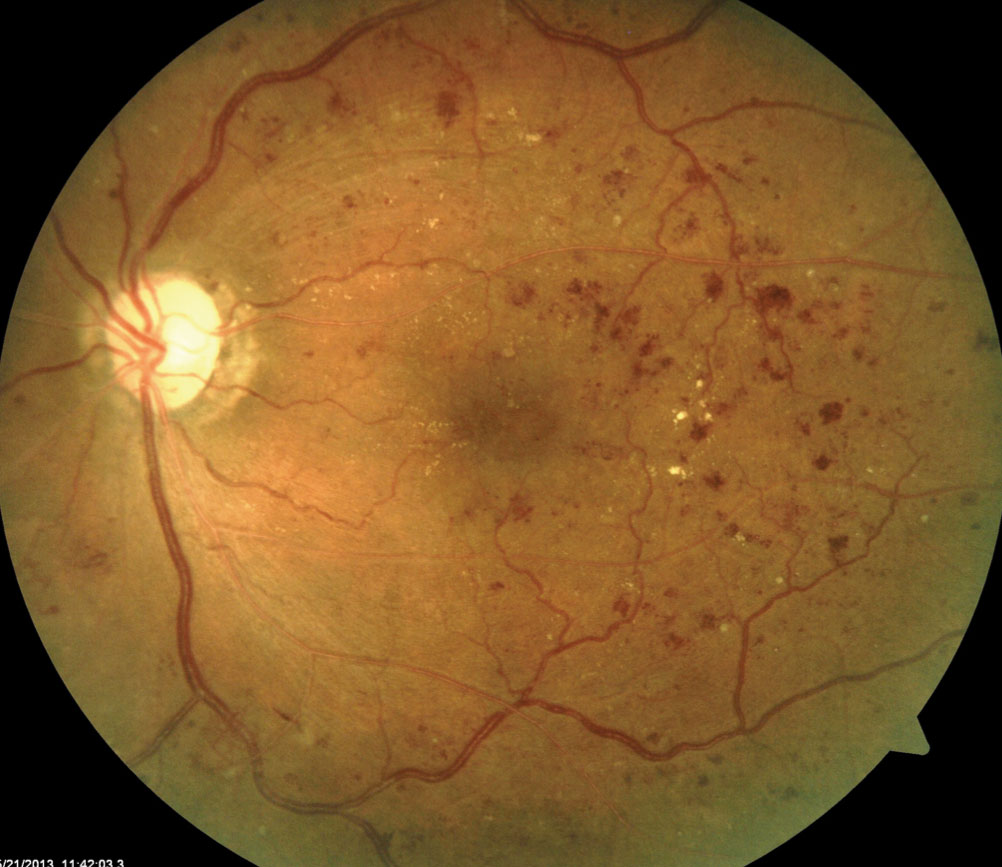 |
| This study found that serum cystatin C outperformed 12 other biomarkers in its ability to detect diabetic retinopathy. Click image to enlarge. |
Given the challenges often associated with providing regular retinal screening for people with diabetes to detect sight-threatening diabetic retinopathy, researchers recently initiated a study to determine if circulating biomarkers could help prioritize screening for those at the highest risk. The data demonstrated that circulating cystatin C has potential as an effective triage test.
This multicenter, cross-sectional study of 538 participants was conducted in parallel in three outpatient ophthalmology clinics in the United Kingdom and two centers in India. The researchers categorized adults 40 years and older into four groups: (1) no history of diabetes, (2) type two diabetes of at least five years’ duration with no evidence of diabetic retinopathy, (3) nonproliferative diabetic retinopathy with diabetic macular edema and (4) proliferative diabetic retinopathy. Groups three and four were comprised of sight-threatening diabetic retinopathy.
Fundus photographs and OCT were used to determine severity of diabetic retinopathy and presence of diabetic macular edema. The researchers performed weighted logistic regression and receiver operating characteristic curve analysis to identify biomarkers that discriminate sight-threatening diabetic retinopathy from no diabetic retinopathy beyond the standard clinical parameters of age, disease duration, ethnicity (in the United Kingdom) and hemoglobin A1c.
The analysis revealed that serum cystatin C had good discrimination power in both the United Kingdom and India, according to the study authors, who noted that cystatin C outperformed 12 other biomarkers that previous research had found to be distinguished in sight-threatening diabetic retinopathy. These findings suggest that circulating cystatin-C levels may serve as an effective test to identify individuals who would benefit from prioritized retinal screening.
“Although retinal imaging is the criterion standard for diabetic retinopathy screening and should be advocated for all patients with diabetes on an annual or biennial basis, this is not always feasible in low- and middle-income countries,” the study authors concluded. “In such low-resource settings, prescreening models with cystatin-C may potentially be used to identify those who need prioritization for retinal screening.”
Gurudas S, Frudd K, Maheshwari JJ, et al. Multicenter evaluation of diagnostic circulating biomarkers to detect sight-threatening diabetic retinopathy. JAMA Ophthalmol. May 5, 2022. [Epub ahead of print]. |

